Abstract
The abundance and heterotrophic activity of attached and free-living bacteria were examined seasonally in coastal water. Heterotrophic activity was determined by the uptake of [14C]glucose. The density of attached bacteria was always minor, not showing a seasonal variation, whereas the free-living bacteria were more numerous and showed a marked seasonal variation, their density being higher under warmer conditions. The contribution of the attached bacteria to the total assimilation of [14C]glucose (from 10 to 38%) was lower than that of the free-living bacteria, neither of them showing a seasonal variation. On a cellular basis, attached bacteria were more active, since they assimilated more [14C]glucose and showed, under warmer conditions, a higher cellular volume (0.102 versus 0.047 μm3). We consider that the factors responsible for these observations were the amount and quality of the particulate material, the different availability of organic matter for the two types of bacteria, and in a fundamental way, the variation in water temperature.
Full text
PDF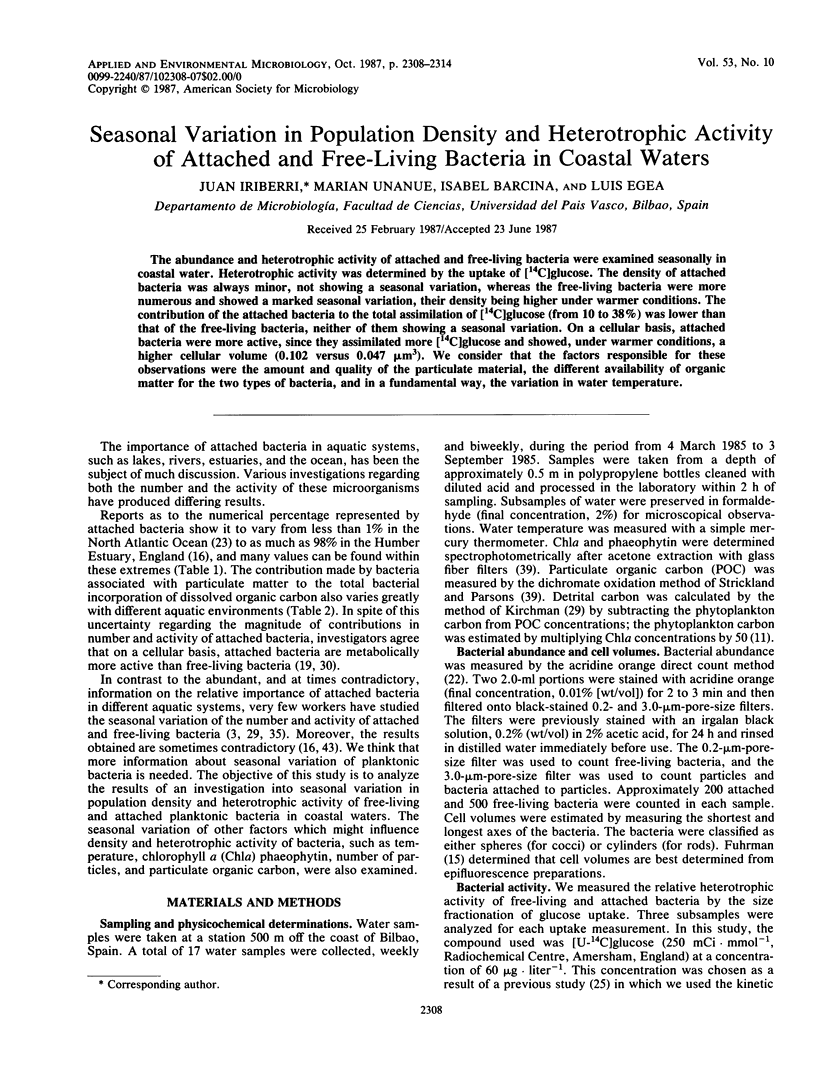
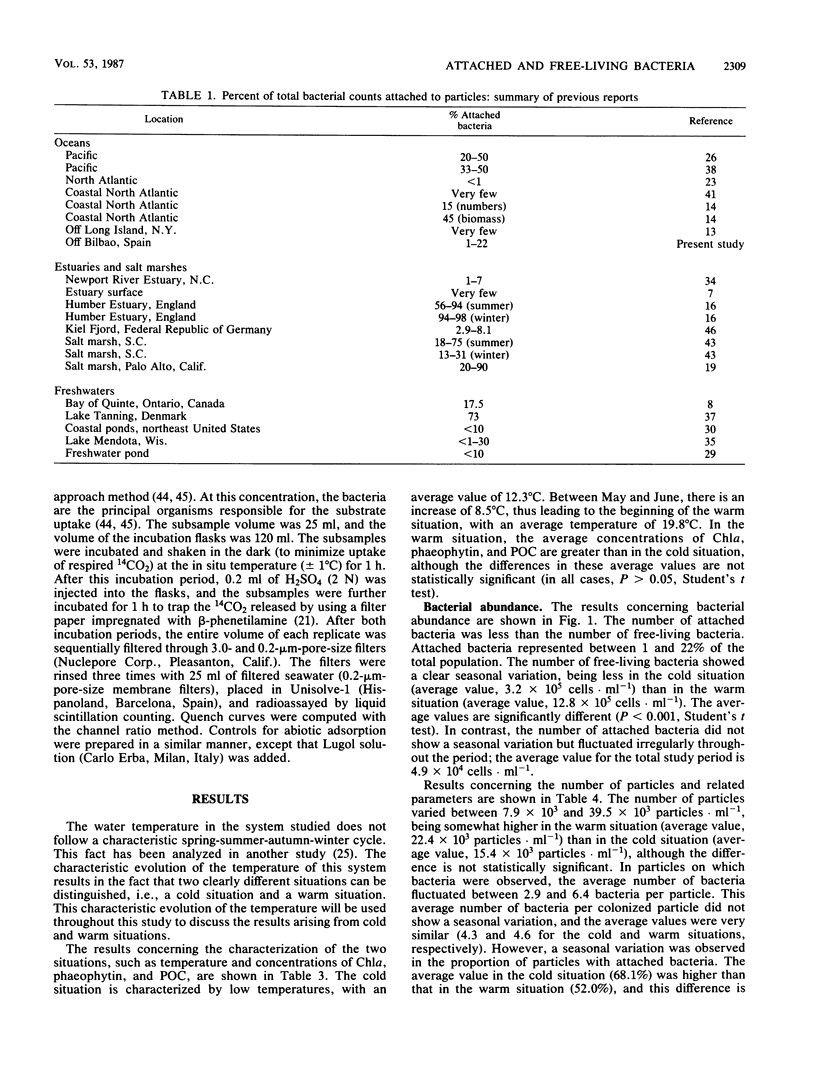
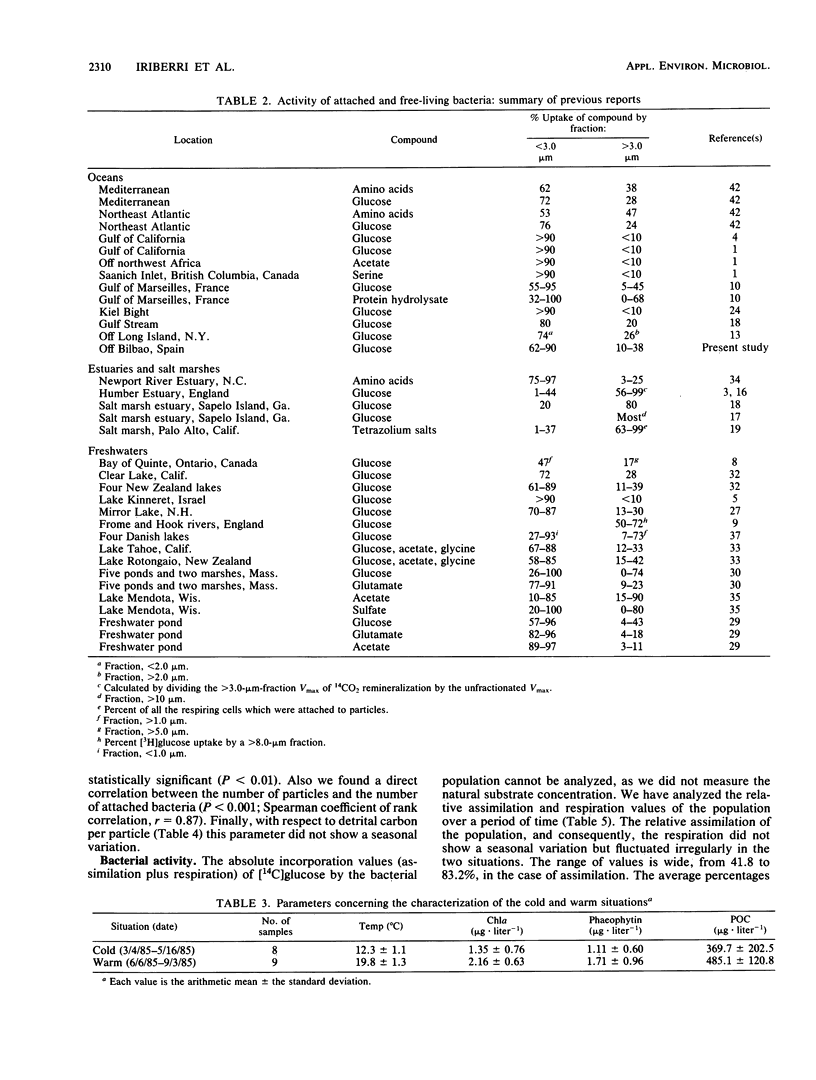
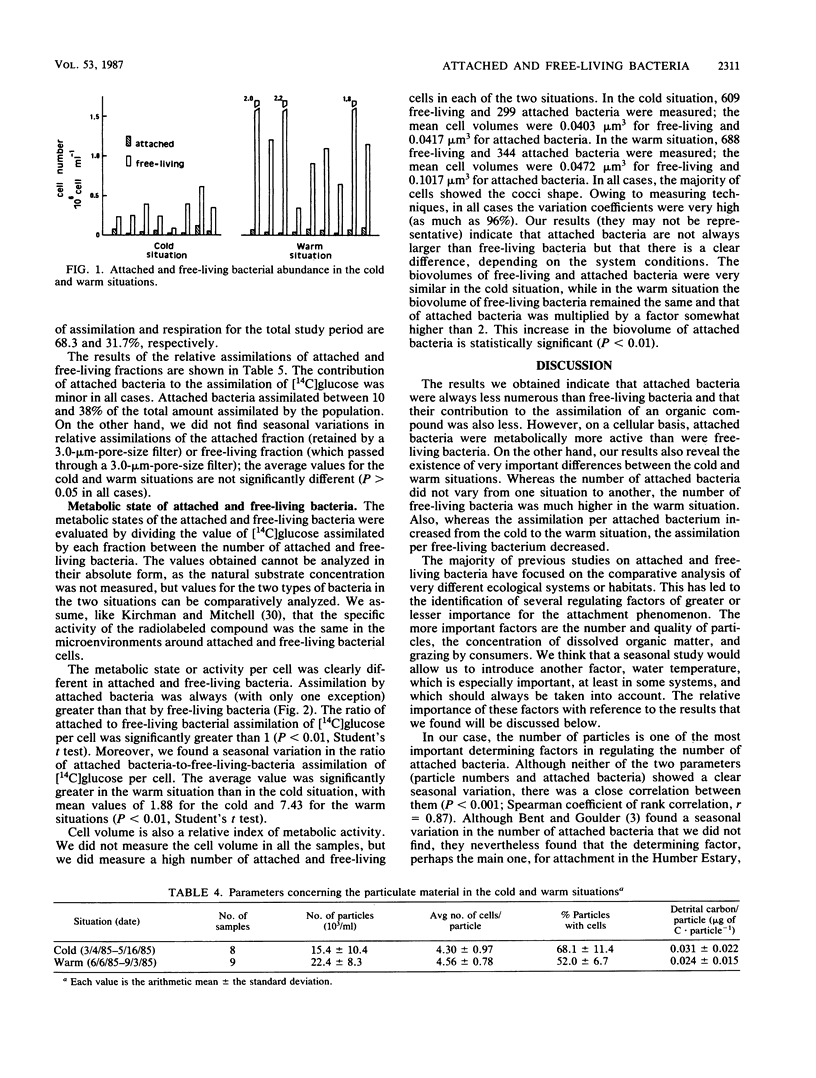
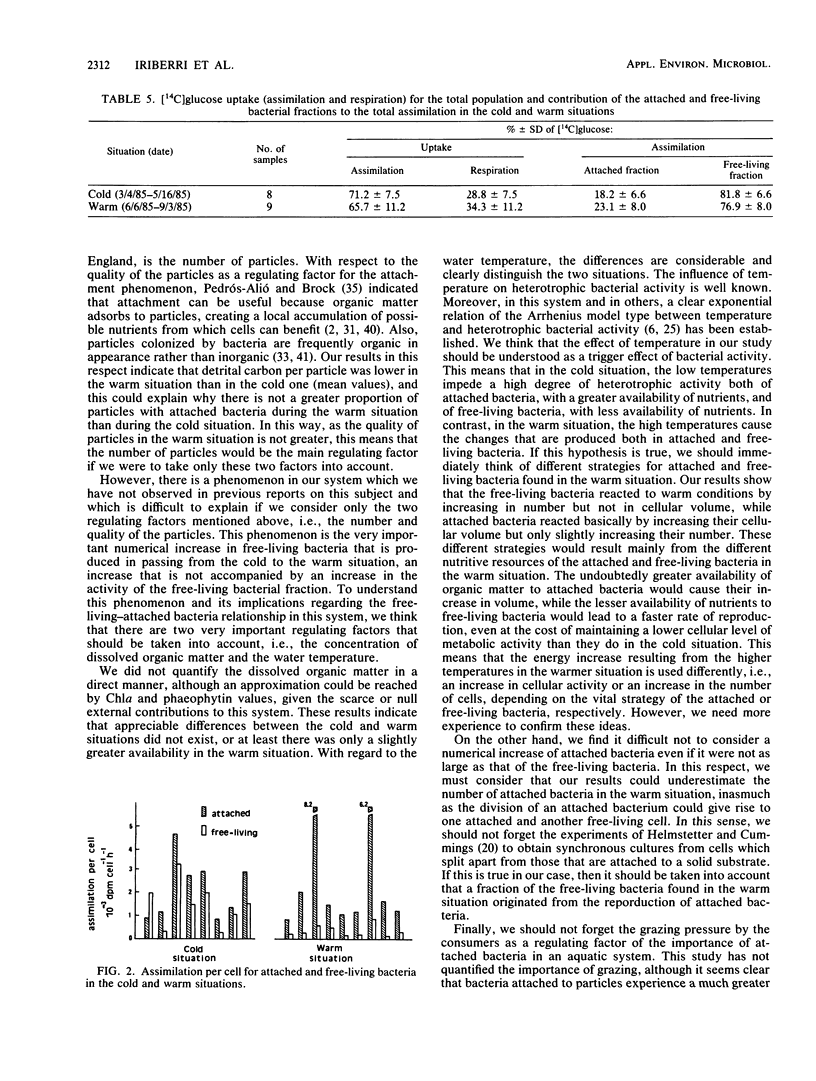
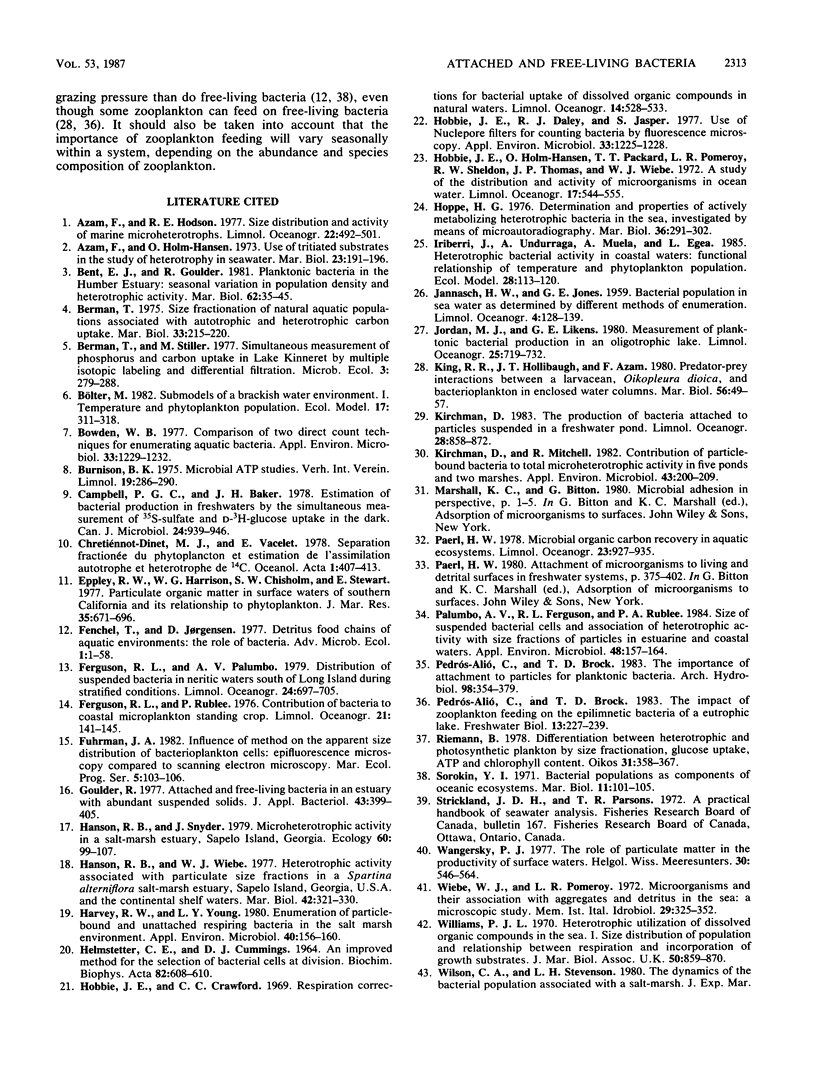
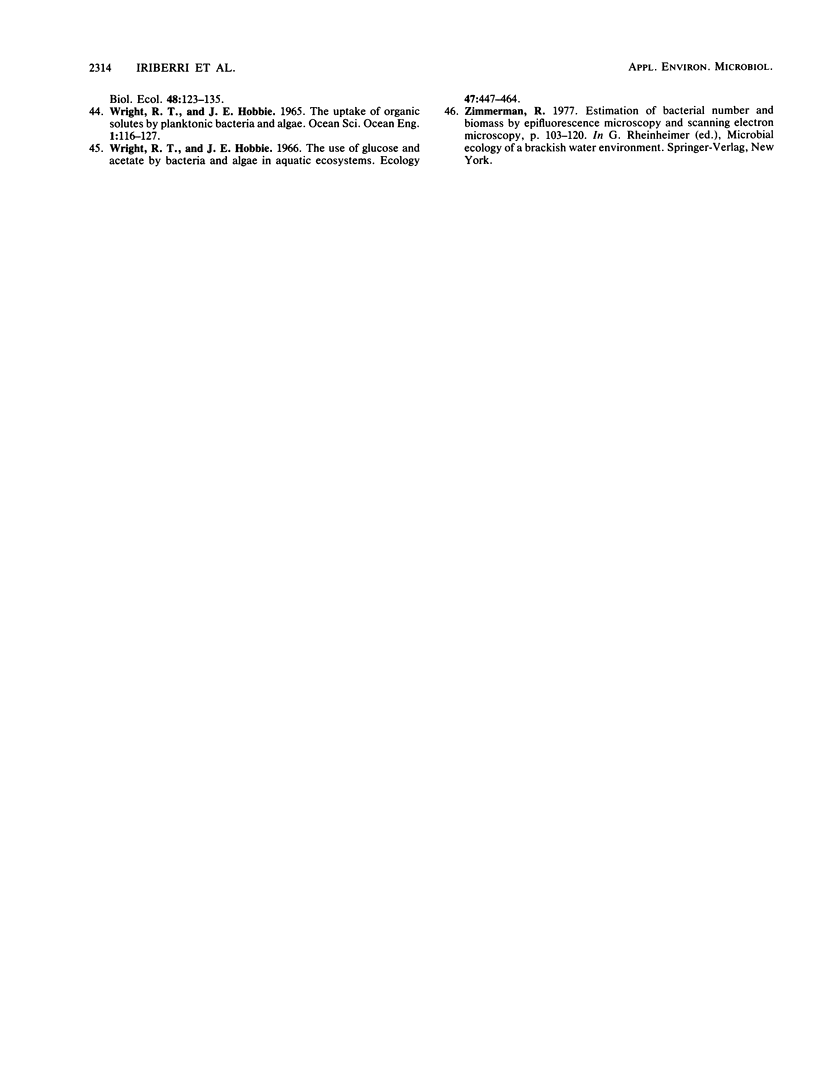
Selected References
These references are in PubMed. This may not be the complete list of references from this article.
- Bowden W. B. Comparison of two direct-count techniques for enumerating aquatic bacteria. Appl Environ Microbiol. 1977 May;33(5):1229–1232. doi: 10.1128/aem.33.5.1229-1232.1977. [DOI] [PMC free article] [PubMed] [Google Scholar]
- Campbell P. G., Baker J. H. Estimation of bacterial production in fresh waters by the simultaneous measurement of [35S]sulphate and d-[3H]glucose uptake in the dark. Can J Microbiol. 1978 Aug;24(8):939–946. doi: 10.1139/m78-156. [DOI] [PubMed] [Google Scholar]
- HELMSTETTER C. E., CUMMINGS D. J. AN IMPROVED METHOD FOR THE SELECTION OF BACTERIAL CELLS AT DIVISION. Biochim Biophys Acta. 1964 Mar 16;82:608–610. doi: 10.1016/0304-4165(64)90453-2. [DOI] [PubMed] [Google Scholar]
- Harvey R. W., Young L. Y. Enumeration of particle-bound and unattached respiring bacteria in the salt marsh environment. Appl Environ Microbiol. 1980 Jul;40(1):156–160. doi: 10.1128/aem.40.1.156-160.1980. [DOI] [PMC free article] [PubMed] [Google Scholar]
- Hobbie J. E., Daley R. J., Jasper S. Use of nuclepore filters for counting bacteria by fluorescence microscopy. Appl Environ Microbiol. 1977 May;33(5):1225–1228. doi: 10.1128/aem.33.5.1225-1228.1977. [DOI] [PMC free article] [PubMed] [Google Scholar]
- Kirchman D., Mitchell R. Contribution of particle-bound bacteria to total microheterotrophic activity in five ponds and two marshes. Appl Environ Microbiol. 1982 Jan;43(1):200–209. doi: 10.1128/aem.43.1.200-209.1982. [DOI] [PMC free article] [PubMed] [Google Scholar]
- Palumbo A. V., Ferguson R. L., Rublee P. A. Size of suspended bacterial cells and association of heterotrophic activity with size fractions of particles in estuarine and coastal waters. Appl Environ Microbiol. 1984 Jul;48(1):157–164. doi: 10.1128/aem.48.1.157-164.1984. [DOI] [PMC free article] [PubMed] [Google Scholar]


